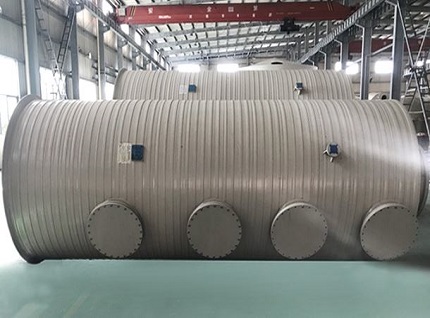HDPE storage tanks are generally known for their excellent chemical resistance, making them suitable for storing a wide range of substances. The performance of HDPE tanks when exposed to various chemicals depends on several factors, including the concentration of the chemical, temperature, and duration of exposure. Here’s how they typically perform:
Resistance to Common Chemicals
Acids: HDPE tanks perform well when storing many types of acids, including hydrochloric acid, sulfuric acid, and nitric acid, particularly at lower concentrations. However, higher concentrations and temperatures may require a more detailed assessment to ensure long-term durability.
Bases: They are also resistant to most bases, such as sodium hydroxide (caustic soda) and potassium hydroxide, maintaining their structural integrity even with prolonged exposure.
Salts and Saline Solutions: HDPE tanks are highly resistant to salts and saline solutions, making them suitable for storing brine and other similar substances without degradation.
Resistance to Organic Chemicals
Alcohols: Generally resistant to alcohols, including ethanol and methanol, but exposure to high concentrations or temperatures may reduce performance over time.
Solvents: The performance against organic solvents varies. While HDPE is resistant to some, like acetone and benzene, it may not be suitable for storing highly aggressive solvents, particularly at elevated temperatures, as they can cause swelling or softening of the material.
Hydrocarbons: HDPE tanks can handle many hydrocarbons, such as oils and fuels, though prolonged exposure to aromatic hydrocarbons (like toluene or xylene) can lead to material degradation.

Temperature Considerations
Cold Temperatures: At lower temperatures, HDPE retains its chemical resistance properties, though it may become more brittle.
High Temperatures: Chemical resistance can decrease at higher temperatures, making it essential to verify the maximum temperature limits for the specific chemical being stored.
Long-Term Exposure
Over long periods, HDPE tanks generally maintain their resistance, though it's essential to monitor for signs of stress cracking or material fatigue, particularly with highly reactive or concentrated chemicals.
Regular inspections and adherence to recommended storage conditions can help mitigate any potential issues that might arise from long-term chemical exposure.
Compatibility Charts and Testing
Most manufacturers provide chemical compatibility charts that list how HDPE performs with various substances. It’s advisable to consult these resources and possibly conduct tests with the specific chemicals you intend to store to ensure optimal performance.
HDPE storage tanks are highly versatile and perform well with a broad range of chemicals, but it’s important to consider the specific chemical properties, concentration, and temperature to ensure long-term reliability.